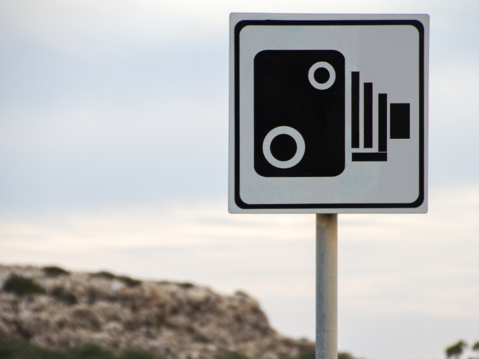What You Need To Know About Speed Cameras
An In-Depth Look at How Speed Cameras Work
Whether you’ve fallen foul of a speed camera in the past or you stick to the limit as you should, you’d have to agree that speed cameras are a part of motoring life that isn’t going away anytime soon.As a vital element of UK road safety, speed cameras exist to remind drivers to adhere to the speed limits, facilitating fines and, in some cases, driving bans if you don’t.You may think you know what kind of speed cameras there are, how they work and what happens if you get caught speeding. However, it’s worth brushing up just in case, so that you can keep yourself and others around you safe, and your driving licence unblemished.
Why do speed cameras exist?
Speed cameras are the eyes of the law on UK roads, particularly in spots that tempt many drivers to speed. They make the roads safer by deterring motorists from breaking the speed limit, and therefore by design, they will only be a problem if you flout the rules.
According to confused.com, there are 1,300 speed cameras operating on UK roads, and 44% of all drivers have at some point been issued with a fine for speeding.
What types of speed cameras are there?
1. Fixed speed cameras
When we talk about speed cameras, the first thing you’ll probably think of is the yellow and grey box at the side of the road, and that’s because it’s the most commonly used speed camera.
These rear-facing cameras are called Gatso cameras - the front-facing versions (the ones that capture the driver’s face) are called a Truvelo camera.
2. Mobile speed cameras
These can crop up pretty much anywhere and can catch drivers unawares. These are organised by the local authorities and usually appear in speeding hotspots, or at the site of a previous speeding-related accident. They may be operated from inside a stationary car or van, or by a person standing at the side of the road, who may or may not be a police officer.
On a straight section of road, a mobile speed camera can detect your speed within 1 mile. Provided it is aimed at you, it doesn’t matter what side of the road you are on in comparison to the mobile camera, and it can even detect you from behind another car.
Average speed cameras
Slightly newer to the speed camera scene, these varieties aim to catch those that might otherwise only slow down when they see a camera. Using ANPR (Automatic Numberplate Recognition), cameras are set up along a stretch of the road to record your speed at various points, and thereforeyour average speed between them. If that average is over the speed limit, you’ll find yourself with a fine.
2. Variable speed cameras
If you’re familiar with the variable speed limits of smart motorways, you’ll understand how these cameras work. Whatever the speed limit is set to on the stretches of smart motorway that variable speed cameras cover will be the threshold at which they’ll catch speeding drivers.
They’re unlikely to be in operation all of the time, but it’s never worth taking the risk regardless.
3. Traffic light cameras
Aimed at a slightly different offence, traffic light cameras will catch those that plough through a red light without stopping. In recent years, many traffic light cameras have been upgraded to catch speeding drivers at the same time, tackling those that speed up when the lights begin to change.
How do speed cameras work?
Many speed cameras work using radar or laser technology, sometimes coupled with markings in the road. The radar or laser will detect that a car is moving at a rate that’s over the speed limit, before two photographs are taken of the car. The lines on the road are then compared with the times that the photographs were taken, to work out how long it took you to cover the markings.
What happens if you get caught speeding?
Depending on the severity of your offence, being caught speeding could mean a fine, points on your driving licence, or potentially a driving ban. If it’s your first offence, you may be offered a speed awareness course instead (providing the amount you exceeded the limit by wasn’t enormous), and this could avoid the permanence of points.
If you end up being fined, the amount it comes to may be worked out based on your salary, alongside how far over the speed limit you were.



